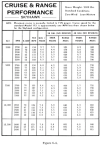I did think about it. What creates wear and tear on an engine is primarily its temperature (hot metal is weak metal) and the pressure created inside the cylinders. Throttle setting is only one of many factors which determine temperature and pressure. Mixture, RPM and ignition timing are other important ones. "But I don't control ignition timing", you say? Indirectly you do, through RPM.
Case in point: many of our engines get a little bit of extra fuel when running full throttle, to keep CHTs and internal cylinder pressure under control during take-off and to provide an increased detonation margin. Trying to "help" the engine with a slight throttle reduction during the initial climb deprives it of that extra fuel, making the mixture leaner - not a good place for the engine at high power. Which shows that what is and what is not good for the engine isn't as simple as looking at the throttle position.
For anyone seeking a better understanding, you are welcome to join my "Lean of Peak & Mixture Management" presentations in Oshkosh on the topic:
- Monday 10AM, EAA Forum Stage 4
- Tuesday 11AM, American Bonanza Society (near the Theater in the Woods)
- Martin


